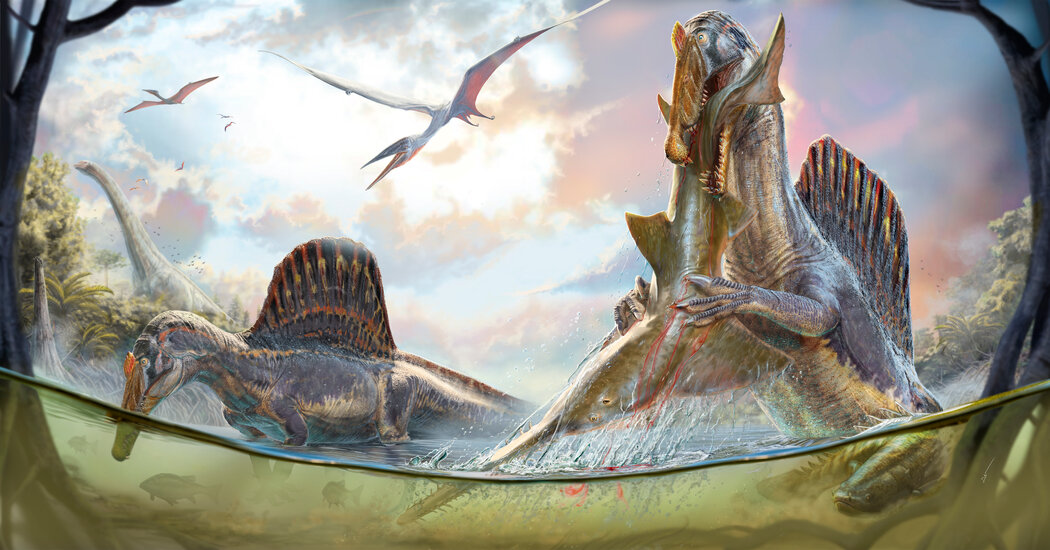A new paper challenges the idea that the large, carnivorous Spinosaurus dived after prey rather than wading and plucking it out of the water.
Spinosaurus was one of the largest carnivorous dinosaurs, and it ate fish. That much paleontologists agree on.
But did it just wade into rivers and snatch them out of the water like a grizzly bear? Or did it dive after its prey like a penguin or a sea lion?
This has become a question of prickly contention among dinosaur experts.
One group is increasingly convinced that Spinosaurus was a rarity among dinosaurs: one that stuck its head underwater and swam beneath the surface. Others say no way.
The latest salvo, published Wednesday in the journal PLOS One, comes from the Spinosaurus-couldn’t-swim contingent to counter a pro-swimming paper published a couple of years ago. The earlier work, published in the journal Nature, claimed that in general, animals that spend much of their time in the water, like penguins, have denser bones that provide ballast and make it easier to dive. Spinosaurus also had dense bones, and therefore was most likely a swimmer, the Nature paper concluded.
But that bone density analysis was “statistically absurd,” said Nathan Myhrvold, a former chief technology officer at Microsoft and an amateur paleontologist who led the new research with Paul Sereno, a paleontologist at the University of Chicago.
Dr. Myhrvold and Dr. Sereno have also argued that the ungainly body shape of Spinosaurus would have made it a poor swimmer, if it could swim at all. The weight distribution of the dinosaur would have made it top-heavy and unstable, Dr. Myhrvold said.
